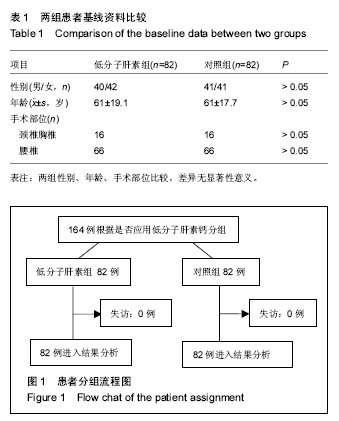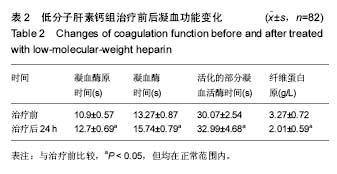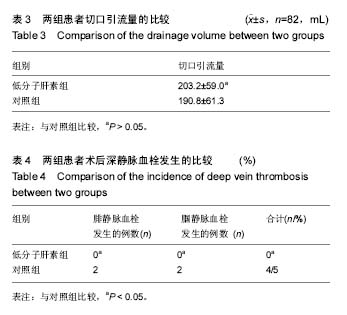| [1] Giuntini C, Di Ricco G, Marini C, et al. Pulmonaryembolism: epidemiology, pathophysiology, diagnosis, and management . Chest.1995;107(1 Suppl): 3-9.[2] Kiluk IE, Krajewska A, Kosacka U, et al. manifestations of pulmonary embolism in younger compared to older patients: Clinical presentation, prediction rules and long-term outcomes. Adv Med Sci.2017;62(2):254-258.[3] Sobreira ML, Rogatto SR, Dos Santos RM, et al.An Unexpectedly High rate of Thrombophilia Disorders in Patients with Superficial Vein Thrombosis of the Lower Extremities. Ann Vasc Surg. 2017;10(16)30897-30894.[4] Bahloul M, Chelly H, Regaieg K,et al. Pulmonary embolism following severe traumatic brain injury: incidence, risk factors and impact outcome.Intensive Care Med.2017;11(5):897-893.[5] Wang CJ, Wang JW,Chen LM,et,al. Deep vein thrombosis after total knee arthroplasty. J Formos Med Assoc.2000;99:848-853.[6] Weinberg DS, Hedges BZ, Belding JE,et al.Risk factors for pulmonary complication following operative fixation of spine fractures.Spine J.2017;8(17):30199-30197.[7] Cook AD, Gross BW, Osler TM,et al.Vena Cava Filter Use in Trauma and Rates of Pulmonary Embolism, 2003-2015.JAMA Surg.2017;10(15):199-203.[8] Saigal D, Ganjoo P, Tetarway M,et al.Acute pulmonary edema and thrombocytopenia following venous air embolism during sitting position neurosurgery.Asian J Neurosurg.2017;12(2): 214-216. [9] Leon L, Rodriguez H, Tawk RG, et al. The prophylactic use of inferiorvena cava filters in patients undergoing high-risk spinal surgery. Ann Vasc Surg.2005;19(3):442-447.[10] Zaw HM,Osborne IC,Pettit PN, et al. Risk factors for venous thromboembolism in orthopedic surgery. Isr Med Assoc J. 2002; 4(11):1040-1042.[11] Chu JN, Maselli J, Auerbach AD,et al.The risk of venous thromboembolism with aspirin compared to anticoagulants after hip and knee arthroplasty.Thromb Res. 2017;12(10): 155:65-71. [12] Kim S, Ahn H, Shin SA,et al.Trends of thromboprophylaxis and complications after major lower limb orthopaedic surgeries in Korea: National Health Insurance Claim Data.Thromb Res.2017;26(4):48-52.[13] Hwang HG, Koo SM, Uh ST,et al.The Perioperative Management of Antithrombotic Therapies Using Enoxaparin.J Korean Med Sci.2017; 32(6):942-947.[14] Marrochi LCR. Prophylaxis of Venous Thromboembolism in Home Care: An Integrative Review.Home Healthc Now.2017; 35(5):268-276.[15] Cheng JS, Arnold PM, Anderson PA, et al. Anticoagulation risk in spine surgery. Spine. 2010;35(9 Suppl):117-124.[16] Audibert G, Faillot T, Vergnes MC, et al. Thromboprohylaxis in elective spinal and spinal cord surgery. Ann Fr Anesth Reanim. 2005;24(8): 928-934.[17] 许建强,张庆俊.脊髓损伤后的高凝状态[J].中国脊柱脊髓杂志, 2002,12(6):422- 423.[18] Nagamalesh UM, Prakash VS, Naidu KC, et al. Acute pulmonary thromboembolism: Epidemiology, predictors, and long-term outcome-A single center experience.Indian Heart J. 2017;69(2):160-164.[19] Barco S, Corti M, Trinchero A, et al. Survival and recurrent venous thromboembolism in patients with first proximal or isolated distal deep vein thrombosis and no pulmonary embolism.J Thromb Haemost.2017;25(5)145-157. [20] Landisch RM, Hanson SJ, Cassidy LD,et al. Evaluation of guidelines for injured children at high risk for venous thromboembolism: A prospective observational study.J Trauma Acute Care Surg.2017;82(5):836-844.[21] Ahmad J, Lynch MK, Maltenfort M,et al.Incidence and Risk Factors of Venous Thromboembolism After Orthopaedic Foot and Ankle Surgery.Foot Ankle Spec.2017;17(4):834-841.[22] Velmahos GC, Arroyo H, Ramicone E, et al. Timing of fracture fixation in blunt trauna patients with severe head injures.Am J Surg.1998;176(4):324-329.[23] Roberts SH, Lawrence SM.CE: Venous Thromboembolism: Updated Management Guidelines.Am J Nurs.2017;117(5):38-47. [24] Mitsunaga MM, Kogachi S, Yoon HC,et al.Risk of Venous Thromboembolism after a Single Normal Proximal Lower Extremity Venous Ultrasound. Perm J. 2017;21(5):38-47.[25] 王学文,王振义.抗凝治疗的进展[J].国外医学输血及血液学分册, 1993,16(1):4.[26] Lim S, Edelstein AI, Patel AA, et al. Risk factors for postoperative infections following single level lumbar fusion surgery. Spine (Phila Pa 1976). 2014;40:1022-1032.[27] Chahoud J, Kanafani Z, Kanj SS. Surgical site infections following spine surgery: eliminating the controversies in the diagnosis. Front Med(Lausanne). 2014;1:7.[28] Chiang HY, Herwaldt LA, Blevins AE, et al. Effectiveness of local vancomycin powder to decrease surgical site infections: a meta-analysis. Spine J. 2014;14:397-407.[29] Srinivasan D, La Marca F, Than KD, et al. Perioperative characteristics and complications in obese patients undergoing anterior cervical fusion surgery. J Clin Neurosci. 2014;21:1159-1162.[30] Tetreault L, Nouri A, Singh A, et al. An assessment of the key predictors of perioperative complications in patients with cervical spondylotic myelopathy undergoing surgical treatment: results from a survey of 916 AO Spine International Members. World Neurosurg. 2015;83:679-690.[31] Rihn JA, Lee JY, Ward WT. Infection after the surgical treatment of adolescent idiopathic scoliosis: evaluation of the diagnosis, treatment, and impact on clinical outcomes. Spine. 2008;33: 289-294. [32] Kanafani ZA, Dakdouki GK, El-Dbouni O, et al. Surgical site infections following spinal surgery at a tertiary care center in Lebanon: incidence, microbiology, and risk factors. Scand J Infect Dis. 2006;38:589-592. [33] Sasso RC, Garrido BJ. Postoperative spinal wound infections. J Am Acad Orthop Surg. 2008;16:330-337.[34] An HS, Seldomridge JA. Spinal infections: diagnostic tests and imaging studies. Clin Orthop Relat Res. 2006;444:27-33.[35] Pull ter Gunne AF, Mohamed AS, Skolasky RL,et al. The presentation, incidence, etiology, and treatmentof surgical site infections after spinal surgery. Spine. 2010;35:1323-1328.[36] Enoch DA,Cargill JS, Laing R.Value of CT-guided biopsy in the diagnosis of septic discitis. J Clin Pathol. 2008;6:750-753.[37] Chaudhary SB, Vives MJ, Basra SK. Postoperative spinal wound infections and postprocedural discitis. J Spinal Cord Med. 2007;30:441-451.[38] Mok JM, Guillaume TJ, Talu U, et al. Clinical outcome of deep wound infection after instrumented posterior spinal fusion: a matched cohort analysis. Spine. 2009;34:578-583.[39] Collins I, Wilson-MacDonald J, Chami G, et al. The diagnosis and management of infection following instrumented spinal fusion. Eur Spine J. 2008;17:445-450.[40] Mehbod AA, Ogilvie JW, Pinto MR,et al. Postoperative deep infections in adults after spinal fusion: management with vacuum-assisted wound closure.J Spinal Disord Tech. 2005; 18:14-17.[41] Akins PT, Harris J, Alvarez JL, et al. Risk factors associated with 30-day readmissions after instrumented spine surgery in 14,939 patients. Spine (PhilaPa 1976). 2015;40:1022-1032.[42] Bydon M, Macki M, De la Garza-Ramos R, et al. Smoking as an independent predictor of reoperation after lumbar laminectomy: a study of 500 cases. J Neurosurg Spine. 2015; 22:288-293.[43] Lim S, Edelstein AI, Patel AA, et al. Risk factors for postoperative infections following single level lumbar fusion surgery. Spine (Phila Pa 1976). 2014;40:1022-1032.[44] GREEN D, IEE M Y, IIM A C, et al. Prevention of thromboembolism after spinal cord injury using low molecular weight heparin. Ann Internal Med.1990; 113(8):571-574.[45] Hill BW, Emohare O, Song B, et al. The use of vancomycin powder reduces surgical reoperation in posterior instrumented and noninstrumented spinal surgery. Acta neurochirurgica. 2014;156:749-754. [46] Theologis AA, Demirkiran G, Callahan M, et al. Local intrawound vancomycin powder decreases the risk of surgical site infections in complex adult deformity reconstruction: a cost analysis. Spine. 2014;39:1875-1880. [47] Martin JR, Adogwa O, Brown CR, et al. Experience with intrawound vancomycin powder for spinal deformity surgery. Spine. 2014;39:177-184. [48] Armaghani SJ, Menge TJ, Lovejoy SA, et al. Safety of topical vancomycin for pediatric spinal deformity: nontoxic serum levels with supratherapeutic drain levels. Spine. 2014,39: 1683-1687.[49] Rayes M, Colen CB, Bahqat DA, et al. Safety of instrumentation in patients with spinal infection. J Neurosurg Spine. 2010;12: 647-659.[50] Sierra-Hoffman M, Jinadatha C, Carpenter JL, et al. MD-Postoperative Instrumented Spine Infections:A Retrospective Review. South Med J. 2010;1(103):25-30.[51] Turnbull F. Postoperative in?ammatory disease of lumbar discs.J Neurosurg.1953;10:469-473.[52] Liu X, Wang Y, Qiu G, et al. A systematic review with meta-analysis of posterior interbody fusion versus posterolateral fusion in lumbar spondylolisthesis. Eur Spine J. 2014;23:43-56.[53] Maruo K, Berven SH. Outcome and treatment of postoperative spine surgical site infections: predictors of treatment success and failure. J Orthop Sci. 2014;19: 398-404.[54] Calvert G, May LA, Theiss S. Use of permanently placed metal expandable cages for vertebral body reconstruction in the surgical treatment of spondylodiscitis. Orthopedics. 2014;37:e536-542.[55] Deep K, Jigajinni MV, McLean AN, et al.Prophylaxis of thromboembolism in spinal injuries-results of enoxaparin used in 276 patients. Spinal Cord. 2001;39(2):88-91.[56] Chiang HY, Herwaldt LA, Blevins AE, et al. Effectiveness of local vancomycin powder to decrease surgical site infections: a meta-analysis. Spine J. 2014;14(3):397-407. [57] Tomov M, Mitsunaga L, Durbin-Johnson B, et al. Reducing surgical site infection in spinal surgery with betadine irrigation and intrawound vancomycin powder. Spine. 2015;40:491-499. [58] Ghobrial GM, Thakkar V, Andrews E, et al. Intraoperative vancomycin use in spinal surgery: single institution experience and microbial trends. Spine. 2014;39:550-555. [59] Bakhsheshian J, Dahdaleh NS, Lam SK, et al. The use of vancomycin powder in modern spine surgery: systematic review and meta-analysis of the clinical evidence. World Neurosurgery. 2015;83:816-823. [60] Hill BW, Emohare O, Song B, et al. The use of vancomycin powder reduces surgical reoperation in posterior instrumented and noninstrumented spinal surgery. Acta Neurochirurgica. 2014;156:749-754. [61] Theologis AA, Demirkiran G, Callahan M, et al. Local intrawound vancomycin powder decreases the risk of surgical site infections in complex adult deformity reconstruction: a cost analysis. Spine. 2014;39:1875-1880. [62] Martin JR, Adogwa O, Brown CR, et al. Experience with intrawound vancomycin powder for spinal deformity surgery. Spine. 2014;39:177-184. [63] Armaghani SJ, Menge TJ, Lovejoy SA, et al. Safety of topical vancomycin for pediatric spinal deformity: nontoxic serum levels with supratherapeutic drain levels. Spine. 2014,39: 1683-1687.[64] Eder C, Schenk S, Trifinopoulos J, et al. Does intrawound application of vancomycin influence bone healing in spinal surgery? Eur Spine J. 2016;25(4):1021-1028.[65] Zebala LP, Chuntarapas T, Kelly MP, et al. Intrawound vancomycin powder eradicates surgical wound contamination: an in vivo rabbit study. J Bone Joint Surg. 2014;96:46-51. |
.jpg)



.jpg)